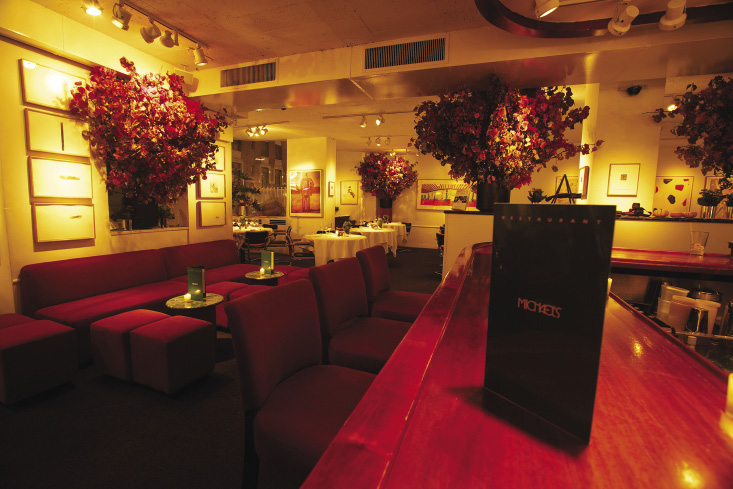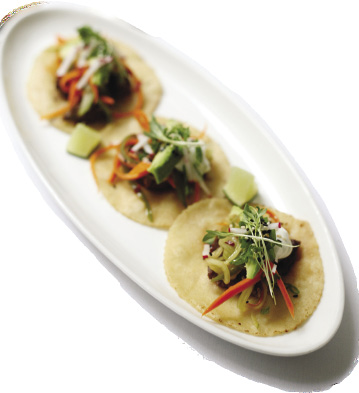


![]()
ONLINE

Providing an Experience
Editors’ Note
Michael McCarty attended the Hill School in Pottstown, Pennsylvania, and lived in Rennes, France for a year as part of the Andover-Exeter School Year Abroad program, during which he experienced for the first time the artistry, quality, and joie de vivre of French dining. He went on to study cooking, wines, and hotel and restaurant management in Paris, earning diplomas from the École Hôtelière de Paris, Le Cordon Bleu, and the Académie du Vin. In 1974, he returned to the United States, attended Cornell’s Summer Hotel Program, and earned a Bachelor of Arts in the Business and Art of Gastronomy from the University of Colorado at Boulder.
Company Brief
In 1979, at the age of 25, Michael McCarty founded Michael’s restaurant in Santa Monica, California (www.michaelssantamonica.com). It remains one of the most acclaimed and popular restaurants in the United States, as does the New York branch of Michael’s (www.michaelsnewyork.com), which opened in midtown Manhattan in 1989. Wine aficionados and beginners alike will find a world of outstanding, intriguing selections on their award-winning wine list, which includes more than 800 labels from California, France, Italy, and other wine-growing regions, as well as the latest vintages from proprietor Michael McCarty’s own The Malibu Vineyard (www.themalibuvineyard.com).
What makes Michael’s so special and how has it stood the test of time?
Conceptually, the food we offer is fresh, local, seasonal, American cuisine. It’s imaginative and delicious, offering variety to our guests, and it’s also accessibly priced. We also take pride in offering outstanding, genuine, warm hospitality and attentive servers. People appreciate the entire experience here.

Michael’s New York
We attract a varied clientele, especially in our New York location, where we’re known as the gathering place for media movers and shakers. There is also a booming Internet and computer-gaming business community in Santa Monica, so the Michael’s there is gaining its own unique media crowd.
Having been open in Santa Monica for 10 years prior to opening New York, I was fortunate that anyone from New York within the advertising, book, magazine, and fashion worlds who came to LA in the ’80s ate at my restaurant.
So when I opened in New York in 1989, we got immediate media coverage. Plus, we had the good fortune of being located in midtown Manhattan, where we were a half block from William Morris, ICM, and CAA. That’s why I specifically waited 10 years for that 55th and Fifth location in Manhattan. I realized that the Santa Monica location, at Third and Wilshire, was never going to generate a power lunch crowd. We had always had a power dinner crowd instead.
Despite such differences between the two locations, we share a common culture. When you eat out, your relationship with the restaurant today is with the waiter you’re assigned to and a hostess at the front desk. We have two maître d’s that have been with us for 10 years and we rigorously plan our seating on a daily basis for breakfast, lunch, and dinner with the goal of creating the setting that makes for perfect dinner parties.
People come here because the experience energizes and satisfies them, and it’s affordable. We launched our brand new menu six months ago not only to offer greater price accessibility but also because we wanted to offer our patrons more variety. We went from menus with short lists of appetizers and main courses to a total of 48 items that enable our guests to mix and match. As a result, we have doubled our business.
My wife Kim and I have also always been involved in the art world. So the decor in both locations boasts a great mix of the finest contemporary art. When you dine at Michael’s, you’ll see some billionaires, a couple of huge art gallery owners or collectors, and famous artists themselves all mingling with titans of the media world.

Korean steak tacos
You offer a great dining experience while maintaining a reasonable price point. What is important about that balance?
The recession in the restaurant business didn’t hit us until the fourth quarter of 2008. I lived through a recession in LA from 1992 to 1995, and when we came out of it in 1995, our exact same clientele was there and no major changes or revolutions had occurred in the restaurant field.
This time, the recession has gone on a lot longer. I realized that fact in 2009 and confirmed by year’s end that it wasn’t changing.
The media and real estate worlds were severely affected. Time needs to heal that.
The most creative time since we started it all was what has become known as the Brooklyn paradigm. From 2006 to 2008, people were building $12-million restaurants because that’s how the business functioned back then. But the recession shut that door immediately and there was a revolution. The new paradigm was that you get the storefront in a low-rent neighborhood, you put no money into the decor, the focus is small, there are 50 seats max, and there is an earnest and tireless person cooking in the kitchen with a colleague in the front. When there is a recession, people drink a lot – the resulting mixology programs that have been created everywhere over the past five years, including in our restaurants, has been astounding. People won’t take vacations in a recession, but they will eat out – especially if the food and drink are great and reasonably priced. The younger generation is on smartphones, which give them the power of choice. They have been conditioned by Twitter – they don’t sit down to have a leisurely two-hour meal; they go to three places in one night. So all of these factors coalesced and brought about an incredible population ready to participate and a proliferation of these new kinds of restaurants, along with phenomena like fusion cuisine. Today, there are probably 40 kinds of Thai food and 300 kinds of Chinese food, as well as Cambodian, Malaysian, French, Portuguese, and Italian food.
At Michael’s, we saw the paradigm shift, so we did some research and came up with our new menus to set a different tone.
Is there a reason that the media go to Michael’s?
Synergy happens when Hollywood and the New York magazine and book businesses get together. It’s why the major corporations in both worlds keep buying each other, creating these media conglomerates.
Michael’s is like a microcosm of that phenomenon. In the dining rooms of both of our New York and California restaurants, you get a true cross-section of media types.
Do you reflect on and appreciate all that you have achieved?
Yes. I’m in the restaurant business because it’s like throwing a great party every day with some of the most interesting and fascinating people. Both Michael’s restaurants feel like my home and I’m happy to welcome our guests.•